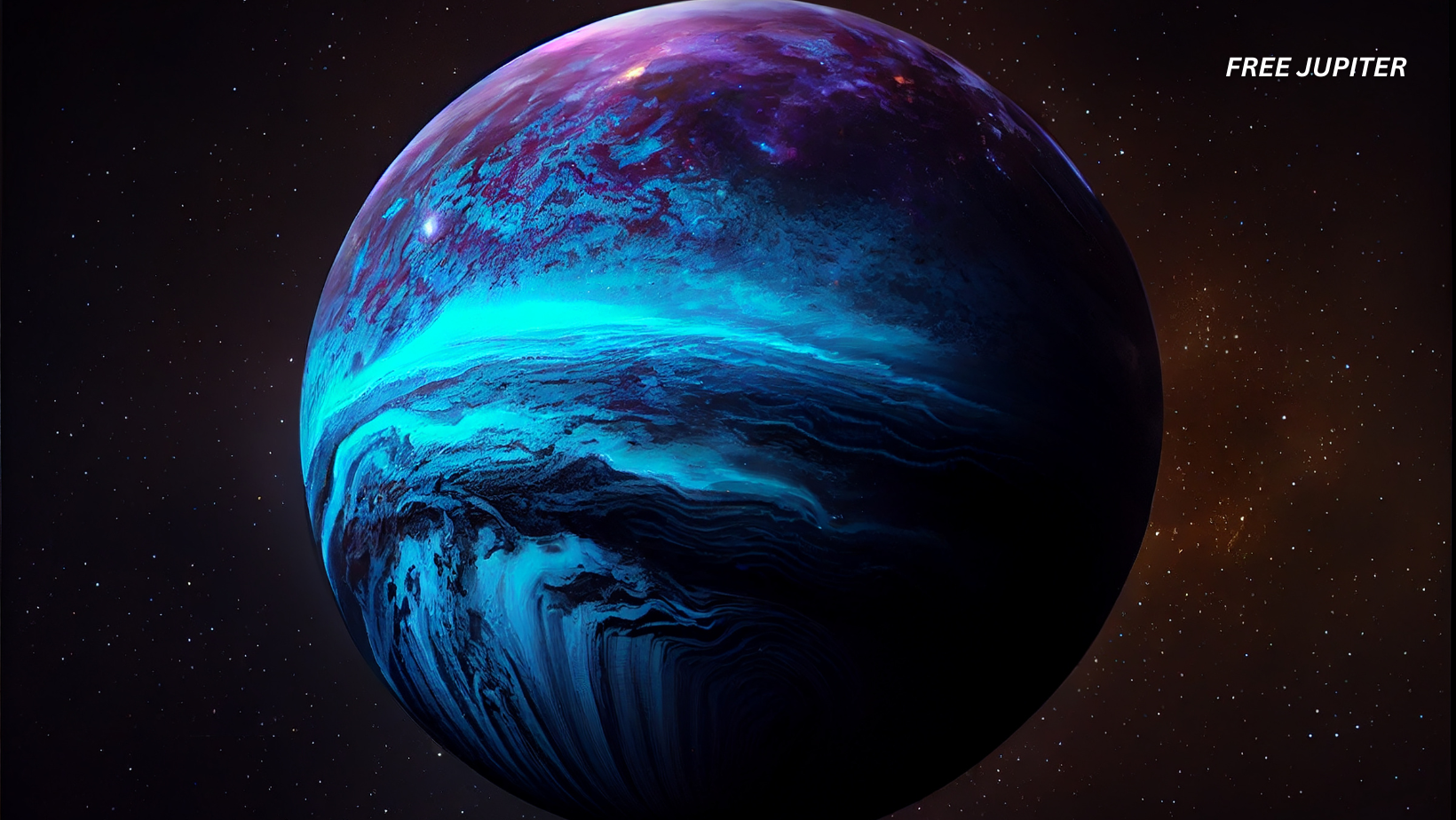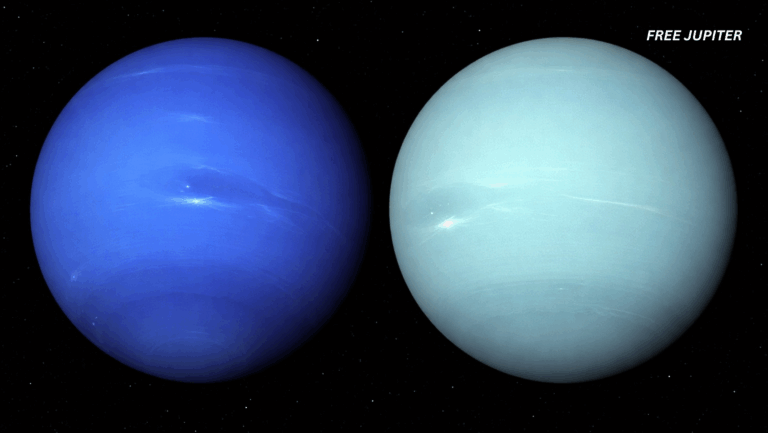Note: FreeJupiter.com shares general info for curious minds 🌟 Please fact-check all claims—and always check health matters with a professional 💙
Astronomers have spotted a heavyweight world swinging around a nearby star, and its orbital path is anything but smooth. This newly discovered planet, called GJ 2126 b, doesn’t glide in a perfect circle like most planets in our solar system. Instead, it zips in close to its star, then hurtles far away on a stretched-out track that screams “chaotic history.”
This unusual orbit not only makes the planet interesting, but it also challenges some of our long-standing ideas about how giant planets form and evolve.
What Makes This Planet Special?
Let’s start with the basics. GJ 2126 b is located about 124 light-years away—pretty close in cosmic terms. For comparison, our Milky Way galaxy is about 100,000 light-years across, so this planet is practically in the next cosmic neighborhood.
But here’s the real kicker: its orbit is extremely eccentric, which is a fancy way of saying it’s highly oval-shaped rather than nearly circular. Most planets in our solar system, like Earth, have orbits that are almost round. Even Mars, which has one of the more stretched orbits in our system, is nothing compared to this one.
GJ 2126 b has an eccentricity of 0.85. If you’re wondering what that means, think of it this way: on a scale where 0 is a perfect circle and 1 is a flat line, this planet’s path is very close to the latter. At one point in its journey, it comes very close to its star—just 0.11 astronomical units (AU), or about 9.9 million miles away. Later, it swings way out to 1.31 AU, which is about 122 million miles. That’s more than a 12-fold difference in distance during its “year.”
And speaking of a year, the planet takes 272.7 Earth days to complete one trip around its star—just under nine months.
Read more: A Real-Life Pandora? Scientists Spot Possible Alien World Near Alpha Centauri A
How Big Is This Planet?
The planet is estimated to have a minimum mass of about 1.3 times that of Jupiter, making it a true gas giant. However, because we don’t yet know the exact tilt of its orbit relative to us, this number is just a lower limit. It could actually be heavier.
Interestingly, if the planet’s orbit happens to be almost face-on from our perspective, its real mass might even push into brown dwarf territory—a class of objects heavier than planets but not quite stars. Researchers are leaning against that idea for now, but it’s still on the table until more data comes in.
A Host Star That’s Small but Mighty
GJ 2126 b orbits a small, cool star officially classified as an M0V-type dwarf. This star has only about 65% of the Sun’s mass and is slightly smaller in size. Its surface temperature is roughly 4,159 Kelvin, making it cooler and dimmer than the Sun, but still bright enough for astronomers to study in detail. In fact, its proximity and brightness make it a great candidate for follow-up observations.
The star also has an interesting trait: it’s relatively metal-rich for its class. In astronomy, “metals” means anything heavier than hydrogen and helium, and stars with more metals often have a higher chance of hosting planets. Looks like that held true here.
How Did Astronomers Spot It?
Finding a planet that doesn’t transit (pass in front of its star) can be tricky. For GJ 2126 b, astronomers relied on the radial velocity method, which detects tiny wobbles in a star’s motion caused by the gravitational tug of an orbiting planet.
The team used HARPS (High Accuracy Radial velocity Planet Searcher), a super-precise instrument mounted on the European Southern Observatory’s 3.6-meter telescope in Chile. HARPS is so stable it can detect changes in a star’s motion as small as 1 meter per second—about the speed of a slow walk.
Over 15 years, researchers gathered 112 radial velocity measurements of this star. They pulled this data from the HARPS-RVBank, a massive public database that includes more than 250,000 velocity measurements for over 5,000 stars. These open datasets allow astronomers worldwide to re-analyze old data and uncover hidden gems—like this wildly orbiting planet.
Why Is Its Orbit So Weird?
A stretched orbit like this is a sign of a messy past. Planets usually form in nearly circular paths inside a protoplanetary disk of gas and dust. So what happened here? Most likely, GJ 2126 b didn’t start out this way. Its current orbit hints at a dramatic event—or several.
One leading theory is planet-planet scattering. In this scenario, the system may have formed multiple giant planets that later jostled for position. Over time, gravitational skirmishes could have ejected some planets entirely and left GJ 2126 b on a highly elongated orbit. Computer models suggest these chaotic encounters can crank up a planet’s eccentricity to values as high as 0.9, so this fits well with what astronomers are seeing.
Another possibility—though less likely here—is that a distant stellar companion or a massive object tugged on the planet’s orbit over millions of years. But so far, there’s no sign of such a companion in the system.
Read more: Scientists Find Evidence Pointing to a Compact Object Hidden Inside the Sun
Life on GJ 2126 b? Probably Not
If you’re wondering whether this planet could host life, the answer is almost certainly no. For starters, it’s a gas giant with no solid surface. But even if it had moons, the extreme temperature swings would make things very complicated.
When GJ 2126 b is close to its star, it gets a big dose of heat. When it swings far out, it chills dramatically. These extreme shifts likely affect its atmosphere, changing cloud patterns and chemistry in ways we can only guess at for now.
Could It Be a Brown Dwarf Instead?
Without knowing the tilt of the orbit (the inclination), astronomers can’t pin down the planet’s true mass. If the orbit is almost face-on, the planet might actually be much heavier than it appears—possibly a brown dwarf. These are objects too big to be planets but too small to ignite hydrogen fusion like a star.
However, the researchers think this scenario is unlikely. They checked for signs of a massive companion using Gaia astrometric data, which would show if the star was wobbling significantly due to a heavy neighbor. The data didn’t show anything unusual, so for now, GJ 2126 b is staying in the planet category.
Why Studying M-Dwarfs Is Tricky
One challenge in finding planets around M-dwarf stars like GJ 2126 is that these stars can be very active. They often have strong magnetic fields and starspots (like sunspots, but bigger and more frequent). These can mimic the wobbles caused by planets, leading to false positives.
To avoid this, astronomers check activity indicators—signs in the star’s light spectrum that reveal magnetic activity. In this case, the signals didn’t match the planet’s 272-day cycle, so the team is confident the wobble is caused by a planet, not a hyperactive star.
Why This Discovery Matters
This isn’t just a cool find for the record books—it also gives astronomers new clues about how giant planets form and evolve. Most giant planets found so far have nearly circular orbits, especially those close to their stars. A planet like GJ 2126 b, with such an extreme orbit, forces scientists to rethink some of their models.
It also highlights the value of long-term observations. If astronomers hadn’t tracked this star for 15 years, they might have missed this planet entirely.
What’s Next for GJ 2126 b?
There’s still a lot we don’t know about this world. For instance:
- Its true mass: We need better measurements or a lucky transit to confirm this.
- Its size and atmosphere: If future telescopes can catch it during its closest approach, we might learn more about its chemical makeup.
- Other possible planets: More monitoring could reveal smaller worlds or remnants of its chaotic past.
Future missions and instruments, like next-generation space telescopes, could even measure its thermal glow or reflected light, though that’s going to be a challenge.
A Giant Planet Found Only 124 Light-Years from Earth!
Read more: Almost the Entire Universe Is Invisible to Us
Final Thoughts
The discovery of GJ 2126 b is a reminder that the universe loves variety. Our solar system might seem like the gold standard, but out there, planets dance to wildly different tunes. Some circle their stars in neat, predictable loops. Others—like this one—swing in daring arcs, hinting at cosmic dramas we can only imagine.
So the next time you look up at the night sky, remember: just 124 light-years away, a giant planet is racing through space on a rollercoaster orbit, rewriting what we know about planetary systems.
Image: Freepik.










